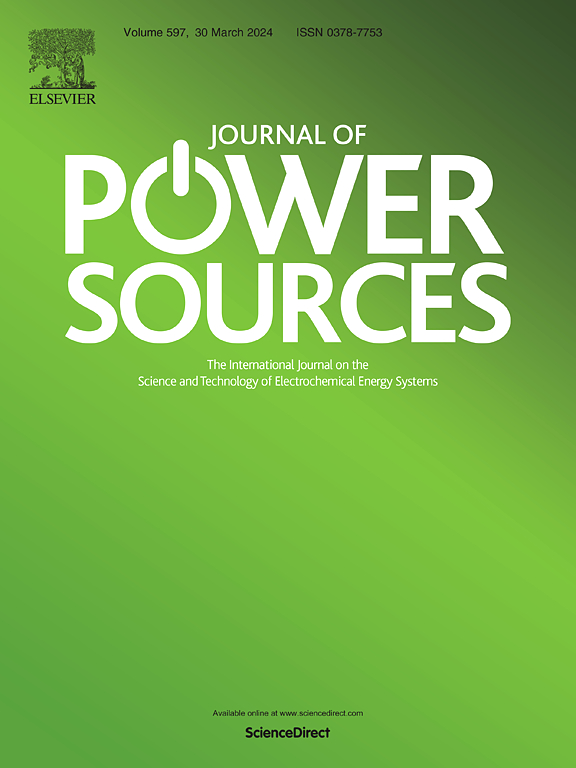基于变压器的锂电池剩余使用寿命多特征混合预测方法
IF 7.9
2区 工程技术
Q1 CHEMISTRY, PHYSICAL
引用次数: 0
摘要
在锂电池循环老化过程中,由于外界影响及其物理化学反应,容量退化表现出明显的不稳定性和随机性。提出了一种基于变压器的锂电池剩余使用寿命多特征分解预测方法。在本研究中,该方法利用了每个充放电周期的平均放电电流、放电电压、电池温度、放电时间和放电容量。然后,在预处理阶段使用Savitzky-Golay滤波(SGF)对数据进行处理。采用CEEMDAN方法对部分多特征数据(电流、电压、电池温度和放电时间)进行分解,得到内禀模态函数(IMF)分量,并计算理论容量进行预测。最后,利用变压器网络进行预测。通过将该方法的评价指标(SGF-CEEMDAN-Transformer)与其他基线预测模型和烧蚀实验进行比较,验证了该方法的优越性。本文章由计算机程序翻译,如有差异,请以英文原文为准。
A transformer-based hybrid method with multi-feature for lithium battery remaining useful life prediction
During the cyclic aging process of lithium batteries, the capacity degradation exhibits significant non-stability and randomness due to external influences and their physical and chemical reactions. In this paper, a Transformer-based multi-feature decomposition prediction method is proposed for estimating the remaining useful life (RUL) of lithium batteries. For this study, the method utilizes the average discharge current, discharge voltage, battery temperature, discharge time, and discharge capacity from each charge–discharge cycle. Subsequently, the data is processed using Savitzky–Golay filtering (SGF) during the preprocessing stage. Some of the multi-feature data (current, voltage, battery temperature, and discharge time) are decomposed using the CEEMDAN method to obtain intrinsic mode function (IMF) components, and the theoretical capacity is calculated for prediction. Finally, the prediction is conducted using the Transformer network. The superiority of the proposed method is verified by comparing the evaluation metrics of the proposed method (SGF-CEEMDAN-Transformer) with other baseline prediction models and ablation experiments.
求助全文
通过发布文献求助,成功后即可免费获取论文全文。
去求助
来源期刊

Journal of Power Sources
工程技术-电化学
CiteScore
16.40
自引率
6.50%
发文量
1249
审稿时长
36 days
期刊介绍:
The Journal of Power Sources is a publication catering to researchers and technologists interested in various aspects of the science, technology, and applications of electrochemical power sources. It covers original research and reviews on primary and secondary batteries, fuel cells, supercapacitors, and photo-electrochemical cells.
Topics considered include the research, development and applications of nanomaterials and novel componentry for these devices. Examples of applications of these electrochemical power sources include:
• Portable electronics
• Electric and Hybrid Electric Vehicles
• Uninterruptible Power Supply (UPS) systems
• Storage of renewable energy
• Satellites and deep space probes
• Boats and ships, drones and aircrafts
• Wearable energy storage systems
 求助内容:
求助内容: 应助结果提醒方式:
应助结果提醒方式:


